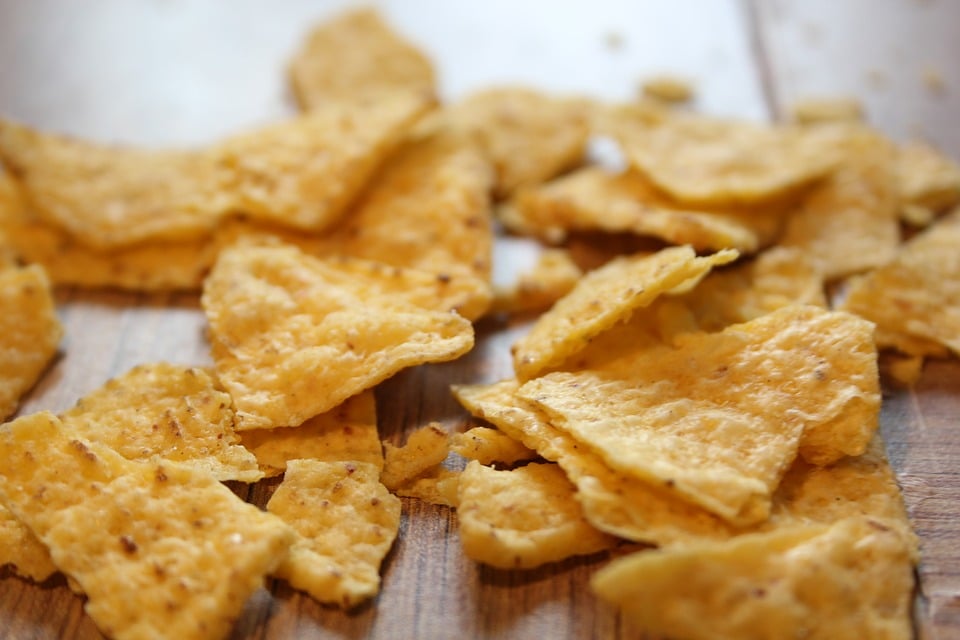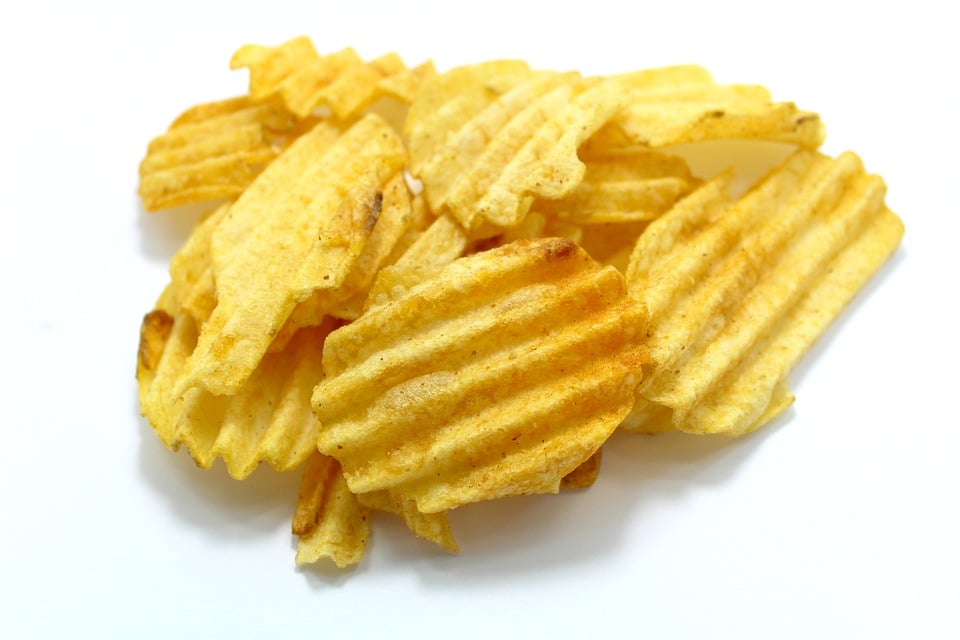Junk food is a craving that many humans have trouble resisting. From some McCoys at midnight to Pringles during a match, it’s easy to forget that these tasty treats aren’t that great for us. But what about our dogs? If crisps are bad for us, what about our furry best friends?
Like most things, food that humans should enjoy in moderation is even more restricted for dogs. Read on to learn about the dangers of crisps, and what health problems they can cause in your dog.
Can my dog eat tortilla chips?
Tortilla chips are usually made from a corn base, fried, and then salted. Both the oil from the frying as well as the salt are the dangers with this seemingly healthier crisp. In cases where the tortilla chips are seasoned with onion or garlic, there are additional health concerns. On top of all that, corn is a common allergen for dogs, so you may be feeding your best friend something that will cause them discomfort down the road.
So my dog got into the crisps…
You should be concerned. The greatest danger if your dog eats crisps is salt poisoning. As we covered earlier salt poisoning is a real danger when it comes to the salty snacks we love. A packet of crisps has around 400 mg salt, so double the 200 mg of salt allowed an average adult dog weighing 15kg (33 pounds). That doesn’t even cover the fat limit of 14g for a dog of the same size. That means if your beagle or pug chows down on an unattended bag of crisps, the results could be dire. Call your vet or the Animal Poison Helpline if this happens.
Sodium poisoning has many consequences, including urination problems, abnormal fluid accumulation, potential injury to kidneys, and even death. Dogs process salt in their stomachs less efficiently than humans, which causes this toxicity.
Symptoms of sodium poisoning include
- Diarrhoea
- Dehydration
- Vomiting
- Lethargy
- Seizures
These symptoms could present themselves shortly after consuming a significant amount of crisps and should be assessed by a trusted vet as soon as possible. It is also important to look out for onion or garlic flavouring in your crisp variety as those ingredients are very toxic to dogs in any form if consumed, and veterinary intervention is recommended.
What About Plain Potatoes?
It really depends on the potato, and what state it is in. Raw potatoes can cause gastrointestinal distress, lethargy, weakness, and confusion in dogs, so it’s best to avoid those in your dog’s diet. Sweet potatoes, on the other hand, are recognised as a healthy snack for your dog in moderation.
For More Information
We offer a collection of articles on foods that are safe, dangerous or even toxic for dogs to eat, including vegetables, dairy, bread, and junk food. There is a wide variety of “human food” that is healthy for your dog to eat, while others are considered toxic and dangerous. Check out which fruits and veg are good for your dog here and which spices and seasonings are ok to give to your furry little buddy here. We’ve created these articles to ensure you’re informed on feeding your dog a wonderfully varied diet while learning the limitations of a dog’s sensitive digestive system.
We may be know for our great advice on anything dog-related here at Rover.com but we also have loads of fantastic dog walkers and sitters who offer dog boarding in your area so get ready to meet your dog’s perfect match!





